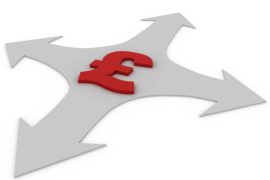After two years of disrupted consumer activity due to lockdowns and public health restrictions, it is going to be interesting to see how much the world returns to the old normal and what parts of the new normal stick.
Certainly, shoppers will continue to choose contactless now that card limits have been raised and the appeal of paying in instalments via Klarna and PayPal Credit online is unlikely to diminish. This will be even more relevant now with inflation pushing prices up and people facing a cost-of-living crisis as they are hit by increased fuel bills at the same time. There’s lots of talk about cryptocurrencies being king this year but what does that mean for businesses and how will that be integrated into everyday purchases?
This article is going to look at what shopping options consumers might choose over others in the next twelve months and more.
In-store shopping will return
We have become accustomed to shopping online during the pandemic and most of us enjoy the convenience of shopping from home. However, for many people shopping is about more than just a transaction and a purchase. There is a social side and for many, the retail experience is a leisure activity. As restrictions have eased people have returned to the high street and shopping centres. Although the British Retail Consortium reported lower than expected footfall in January, this is expected to pick up once the Omicron wave of Covid has passed. Almost certainly what will happen next is a blended approach by retailers that offers customers a personalised experience. Bricks and mortar stores will see customers return but this will be as an extension of an online experience and vice versa.
Online will continue to grow
The genie is out of the lamp, and it has no intention of going back in. Ecommerce was already huge before the pandemic, but many sectors came into their own during it. People had more time on their hands and less, or even no access, to their usual activities. Social media platforms became the replacement for the pub and coffee shop, Zoom gatherings, and quizzes the norm. These businesses which experienced high traffic flows from a largely passive audience will now be engaging with customers to keep them coming back. Many online retailers are deploying sales promotion techniques. Savvy shoppers and gamers are using coupon aggregators to find the best money off coupons and best casino bonuses before spending their money online.
Digital wallets
People are now shopping with their phones, keeping all their payment cards as virtual ones inside what is known as a digital wallet. It is not only virtual payment cards that are stored here but also travel tickets and other essential information. It is now possible to leave home with nothing other than a fully charged phone and possibly a power backup for emergencies. The advantage of a digital wallet over contactless payment is that there is no limit on the spend as the customers’ face ID acts as the security.
Cryptocurrencies
Every year for the last few years we have been told that Bitcoin and now Ethereum will break into the mainstream for purchasing goods and services. In reality, this may still be some way off as not enough companies currently accept this payment form. Those who do include Tesla, Wholefoods, and in some cases Starbucks but there is no doubt that users are still fairly niche. Crypto is of particular interest to Gen Z and Millennials but it is still about believing trading in it will make them rich rather than it being a replacement for traditional banking services. However, with PayPal now offering users the option to buy, sell and hold crypto 2022 could be a year of seismic change. Particularly now some transactions can be paid for on the platform using crypto.





